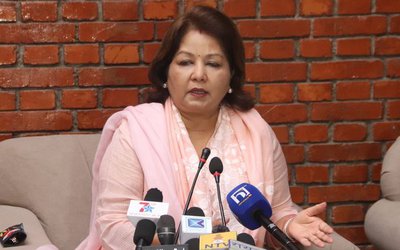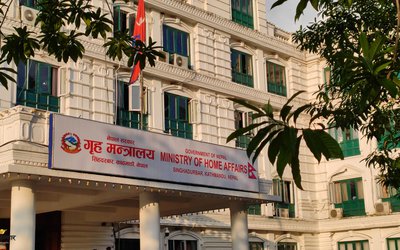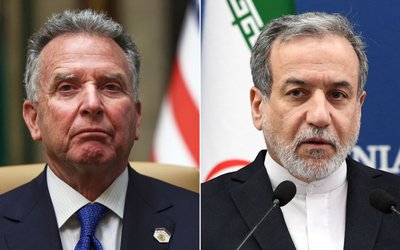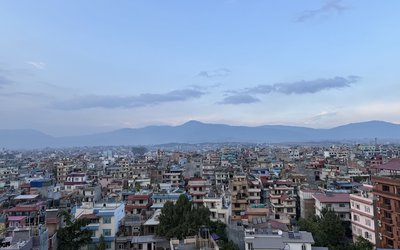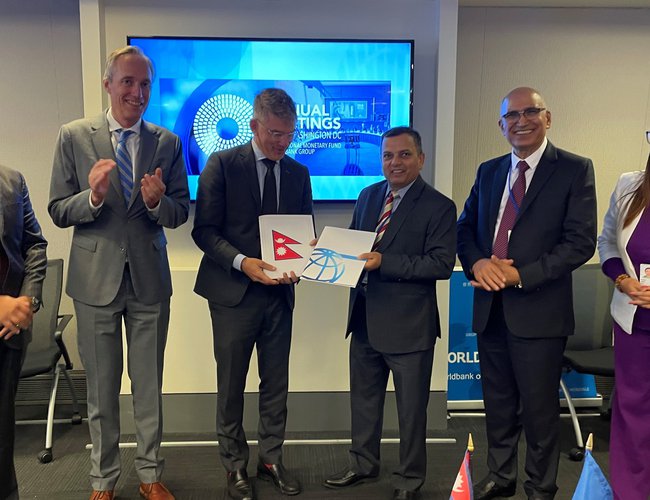
The Government of Nepal and the World Bank signed a US$150 million equivalent (NPR 20 billion) financing agreement on October 23 for contingent financing that can be availed in the case of a natural or climate-induced hazard or health emergency in Nepal.
The Nepal Disaster Resilience Development Policy Credit with Catastrophe Deferred Drawdown Option (Cat DDO) operation supports policy and regulatory reforms to increase disaster resilience and strengthen institutional mechanisms for effective disaster response. It also supports the government in improving early warning communications and building the policies, institutions, and regulatory frameworks needed for risk reduction and risk-informed investment in critical infrastructure, as well as increasing preparedness for public health emergencies.
The agreement was signed by Ram Prasad Ghimire, Secretary, Ministry of Finance, and David Sislen, World Bank Regional Country Director for Maldives, Nepal, and Sri Lanka in the presence of Deputy Prime Minister and Finance Minister Bishnu Prasad Paudel and World Bank Vice President for South Asia, Martin Raiser.
“The Cat DDO is important for Nepal as it helps address climate-related as well as other natural catastrophe and health-related crises by providing contingency financing. It will enhance the country’s crisis preparedness, prevention, and response by providing immediate and flexible liquidity that is particularly important during the time of fiscal pressure,” stated Ram Prasad Ghimire, Secretary, Ministry of Finance.
Contingent financing through the Cat DDO complements the Government’s existing response mechanisms, such as the National Disaster Management Fund and the Prime Minister’s Disaster Relief Fund.
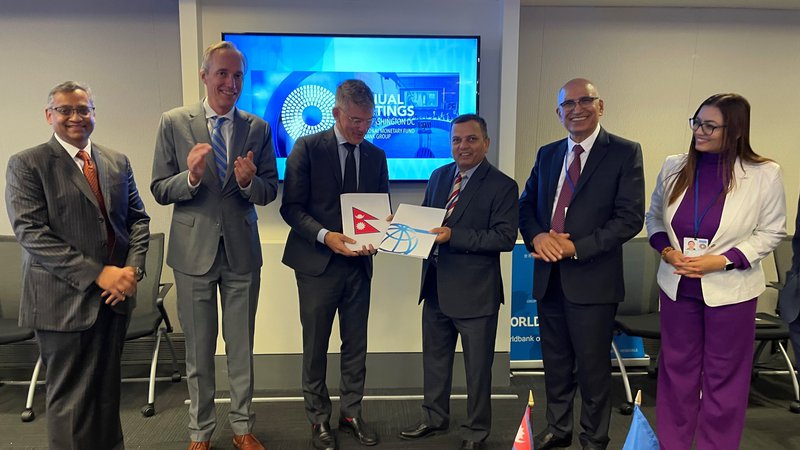
“The Cat DDO is an innovative disaster risk financing instrument that can help the government respond quickly to emergency needs without diverting resources from its ongoing development programs,” said David Sislen, World Bank Regional Country Director for Maldives, Nepal, and Sri Lanka. “Beyond providing financing, the operation is designed to ensure results on the ground and further strengthen the capacity of the government in disaster risk mitigation, preparedness, response, and recovery.”
The operation is also supported by technical assistance from the Global Facility for Disaster Risk Reduction and Recovery (GFDRR) and the Earthquake Housing Reconstruction Multi-Donor Trust Fund supported by the Canadian government, U.S. Agency for International Development (USAID), the Foreign, Commonwealth and Development Office (FCDO), and Swiss Agency for Development and Cooperation (SDC).
- Foreign Minister Dr. Deuba to head to Bangkok to chair UN Meeting
- Apr 20, 2025
- We Do, What We Say, The Government Will Not Be Afraid: RPP Leader Lingden
- Apr 20, 2025
- Home Ministry warns RPP: Action will be taken if it violates prohibited Areas
- Apr 20, 2025
- Weather Forecast: Partly To Generally Cloudy With Brief Rain In Kathmandu, Pokhara And Janakpur
- Apr 20, 2025
- Korean Embassy Hosts FRIENDS OF KOREA 2025 Event in Kathmandu
- Apr 19, 2025






